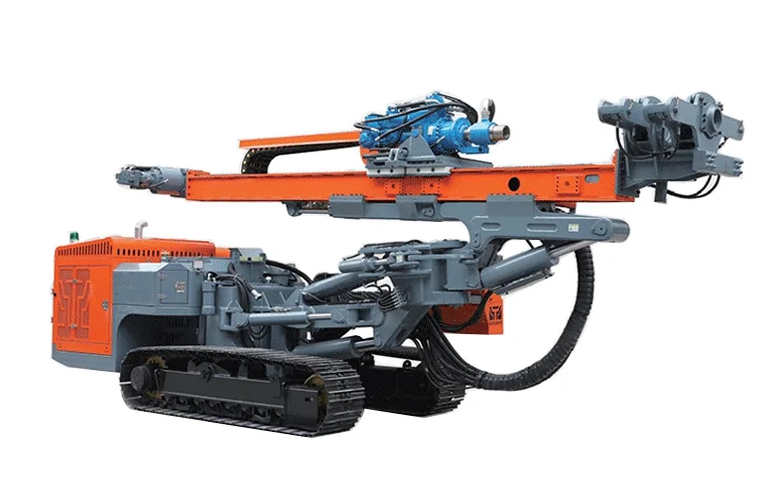 English
English שפה עברית
שפה עברית  Kurdî
Kurdî  Español
Español  Português
Português  русский
русский  tiếng Việt
tiếng Việt  ภาษาไทย
ภาษาไทย  Malay
Malay  Türkçe
Türkçe  العربية
العربية  فارسی
فارسی  Burmese
Burmese  Français
Français  日本語
日本語  Deutsch
Deutsch  Italiano
Italiano  Nederlands
Nederlands  Polski
Polski  한국어
한국어  Svenska
Svenska  magyar
magyar  বাংলা ভাষার
বাংলা ভাষার  Dansk
Dansk  Suomi
Suomi  हिन्दी
हिन्दी  Pilipino
Pilipino  Gaeilge
Gaeilge  Indonesia
Indonesia  Norsk
Norsk  تمل
تمل  český
český  ελληνικά
ελληνικά  український
український  Javanese
Javanese  தமிழ்
தமிழ்  తెలుగు
తెలుగు  नेपाली
नेपाली  български
български  ລາວ
ລາວ  Latine
Latine  Қазақша
Қазақша  Euskal
Euskal  Azərbaycan
Azərbaycan  Slovenský jazyk
Slovenský jazyk  Македонски
Македонски  Lietuvos
Lietuvos  Eesti Keel
Eesti Keel  Română
Română  Slovenski
Slovenski
What Drilling Techniques Are Used by Modern Mining Drilling Rigs?
2025-11-14
What Drilling Techniques Are Used by Modern Mining Drilling Rigs?
The pursuit of mineral resources requires penetrating a vast array of geological formations, from unconsolidated overburden to the hardest igneous rock. To meet this challenge, modern mining drilling rigs are equipped with a versatile arsenal of drilling techniques. The choice of technique is a strategic decision, balancing objectives such as sample quality, penetration rate, depth capability, and operational cost. These methods have evolved from simple mechanical systems to highly sophisticated, digitally controlled processes that provide rich data in addition to a borehole. The primary techniques utilized today include Rotary, Reverse Circulation (RC), Diamond Core, and Down-The-Hole (DTH) drilling.
Rotary drilling is one of the most established and widely used methods, particularly in surface mining for blastholes. A mining drilling rig using this technique employs a rotating drill string with a tri-cone roller bit to crush the rock. Cuttings are removed by continuously circulating a flushing medium, typically compressed air or a mixture of air and foam, which blows the chips up the annulus between the drill rod and the hole wall. While efficient and fast, the sample can become contaminated as it travels to the surface, making it less suitable for precise exploration sampling. Variations include Rotary Percussion, which adds a high-frequency hammering action to the rotation, enhancing performance in fractured rock.

For exploration where representative chip samples are paramount, the Reverse Circulation (RC) method is the industry standard. This technique is a major advancement driven by the needs of the mining drilling rig for accurate grade control. An RC system uses a dual-wall drill pipe. The outer annulus between the two pipes carries compressed air down to a pneumatic hammer that drives a tungsten-carbide bit. The cuttings are then forced up through the inner tube, creating a closed-loop system that minimizes contamination from the wall of the hole. The sample arrives at the mining drilling rig via a cyclone, where it is collected for geological logging and assay. RC drilling provides a reliable, cost-effective sample for resource definition and is known for its rapid penetration rates.
When detailed geological and structural information is required, Diamond Core drilling is the undisputed choice. This method, used by a specialized mining drilling rig, recovers a solid cylinder of rock known as a core. A diamond-impregnated bit attached to the end of a core barrel is rotated to cut a annular ring into the rock, leaving the central core intact inside the barrel. The core is periodically retrieved to the surface, providing an continuous and undisturbed record of the lithology, structures, mineralogy, and alteration. This high-fidelity data is essential for detailed resource modeling, geotechnical rock mass characterization, and metallurgical testing. While slower and more expensive per meter than RC, the value of the information it provides is unparalleled.
Other specialized techniques augment these primary methods. Down-The-Hole (DTH) drilling, where the hammer is located directly behind the bit, is highly efficient in hard rock formations for both large-diameter blastholes and water wells. Sonic drilling, which uses high-frequency vibrations to fluidize the soil, offers exceptional sample quality and speed in unconsolidated materials. A modern mining drilling rig is often a multi-purpose platform capable of switching between several of these techniques. Furthermore, these rigs are increasingly integrated with sophisticated software that records and interprets drilling parameters (e.g., Penetration Rate, Torque) in real-time, providing immediate geo-referenced data about the subsurface, a practice that is revolutionizing the exploration and mining cycle.




